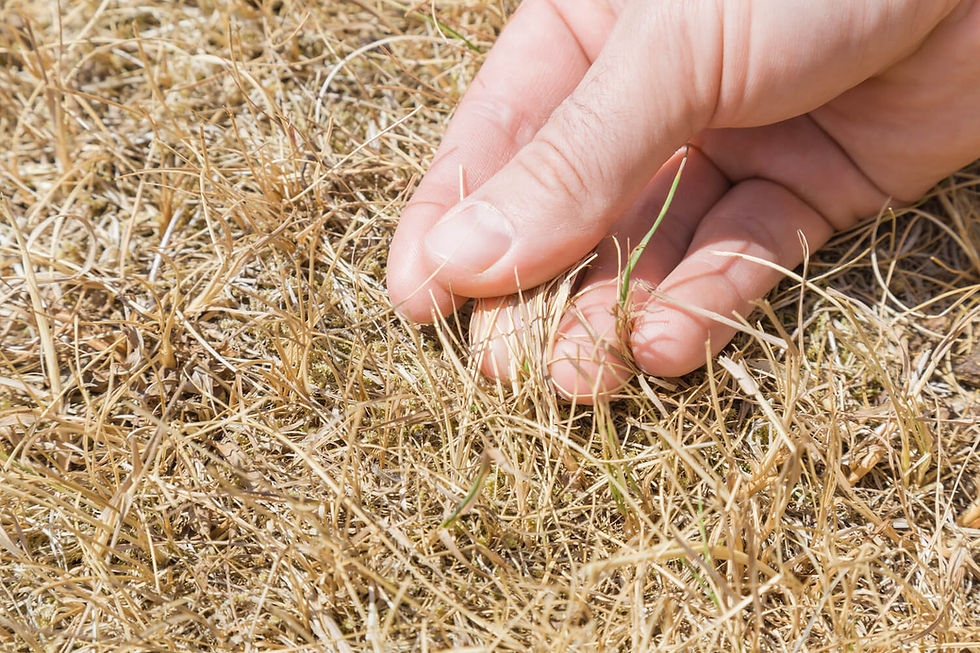Lawn Care in the Summer: Tips for a Lush, Healthy Green Space
- Joel Kouski

- Aug 14, 2023
- 2 min read
Updated: Aug 22, 2023
Ah, summertime! The season of BBQs, pool parties, and of course, luxuriant green lawns. But as the mercury rises, our lawns can experience stress, leading to a less-than-lush appearance. Here's how we at Kouski Landscaping recommend you ensure your lawn remains the envy of the neighborhood throughout those sunny months.
1. Watering: The Foundation of Summer Lawn Care
When to Water: The best time to water is early in the morning, preferably before sunrise. This reduces evaporation, ensuring that water reaches the roots. Evening watering can lead to prolonged moisture on the grass, increasing the risk of diseases.
Deep and Infrequent: Instead of frequent shallow waterings, water your lawn deeply and less often. This encourages deep root growth, making your grass more drought-resistant.
Measure: A good rule of thumb is to ensure your lawn receives at least 1 to 1.5 inches of water weekly. Place a small container or a rain gauge on your lawn to measure the amount.
2. Mowing: It's Not Just About Keeping Things Tidy
Height Matters: Never cut more than one-third of the grass blade in a single mowing. This ensures the grass maintains enough surface area to perform photosynthesis efficiently.
Keep Blades Sharp: Dull blades tear grass, leading to a ragged appearance and potentially making it more susceptible to pests and diseases.
Mowing Patterns: Change your mowing pattern regularly. This prevents the grass from leaning in one direction and reduces soil compaction.
3. Fertilizing: Feed Your Lawn
Summer isn't the best time for heavy fertilizing, especially during extreme heat. However, a slow-release fertilizer can provide the necessary nutrients without overwhelming the grass. If you fertilized in the spring, your lawn might already have the nutrients it needs for summer. Need help fertilizing? Feel free to contact us at Kouski Landscaping and let us take care of the work for you.
4. Pest and Weed Management
Natural Predators: Encourage birds and beneficial insects to your garden, which can naturally control pests.
Organic Solutions: Consider organic herbicides and insecticides. They're often less harmful to the environment and your lawn's ecosystem.
Spot Treat: Instead of treating the whole lawn with herbicides or pesticides, spot-treat only affected areas.
5. Aerate Your Lawn
Summer can lead to soil compaction, especially if it's frequently used for play or gatherings. Aeration, which involves perforating the soil with small holes, allows water, air, and nutrients to penetrate the roots, promoting healthier growth. While spring and fall are the most common times to aerate, if you notice compaction in the summer, it's worth considering. By the way, you can sign up for aeration services by clicking HERE.
6. Watch Out for Signs of Stress
Brown patches, wilted blades, or grass that doesn’t spring back when stepped on are signs of stress. Adjust your watering routine and ensure that there's no disease or pest causing the problem.
In Conclusion
Summer lawn care revolves around understanding the unique challenges that the hotter months present. By adapting your care routine, you can ensure your lawn remains a vibrant, welcoming space throughout the season. Happy gardening!
Want Kouski Landscaping to handle the lawn care for you? Click HERE to sign up for lawn care.


Comments